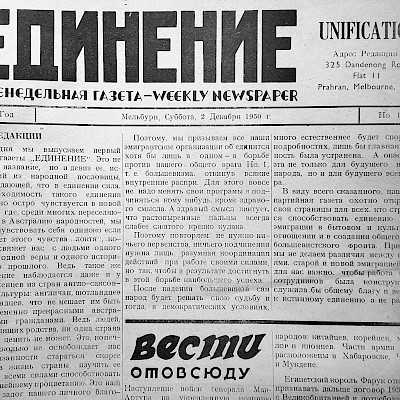Heart and vascular disease is the leading cause of death in the modern world (32% of all deaths!).
However, doctors claim that most cardiovascular diseases can be successfully prevented. You do not need long courses of treatment or special medical programmes. All you need to do is change your lifestyle by quitting smoking, drinking alcohol and reducing your body weight to a normal level.
But if you already have cardiovascular disease (CVD), the most important factor in successful treatment is early diagnosis. This means detecting and treating the disease at the earliest possible stage. That is why we all need to know the main symptoms of heart disease. And if you notice them, you should contact your doctor immediately.
1. Pain behind the breastbone.
This is the most common sign that something is wrong with your "engine". The breastbone is a flat, elongated bone that sits right in the middle of your chest. The first seven pairs of ribs are attached to it by cartilage, and just behind it is your heart.
Pain behind the breastbone can vary from mild discomfort to a sharp, stabbing pain. But most often it is a squeezing, tightening pain. Doctors call it stenocardia or angina pectoris, but folklore has given it a figurative definition - brick on the chest. Imagine a big, unmoving brick lying on your chest, so heavy that you cannot breathe because of its weight. This is the feeling during a typical attack of angina pectoris, which is caused by a sudden reduction in the blood supply to the heart muscle due to a narrowing of the coronary arteries.
Doctors also distinguish the "clenched fist" symptom, also known as Levine sign, which is specific to CVD. If you ask a patient to describe what they feel at the moment of pain, they are likely to put a clenched fist to their chest to demonstrate "pressure on the heart".
Angina usually develops after physical activity or in the context of an emotional experience. It is also important to remember that the pain of angina pectoris is very variable. It can be felt in the shoulder, arm, back, neck or jaw, and sometimes it can even be similar to heartburn. The pain usually goes away on its own within 5-15 minutes. What's more, it can be treated quickly with medicines (ask your doctor which ones to use). If the pain does not go away after 15 minutes and is not relieved by heart medication, you should call an ambulance immediately. This is a sign of a heart attack. You may experience sweating, nausea or vomiting, dizziness and even loss of consciousness.
2. Dyspnoea.
This is an increase in the frequency and depth of breathing accompanied by a feeling of shortness of breath. Dyspnoea is one of the earliest and most common symptoms of cardiovascular problems. It is significantly more common in women than in men and is often the only manifestation of CVD. A characteristic feature of dyspnoea caused by heart diseases is difficulty breathing in (inspiratory dyspnoea). In respiratory diseases, however, it is almost always difficult to breathe out (expiratory dyspnoea).
Dyspnoea first occurs during physical exertion. Doctors have special scales based on how many metres a person can walk or how many stairs they can climb before dyspnoea occurs. Such scales help to assess the severity of heart disease. As the condition worsens, dyspnoea also occurs at rest, especially when a person is lying horizontally. For this reason, people often put pillows under their backs in bed. This forced position is called "orthopnoea". In extreme cases, orthopnoea forces a person to sleep practically sitting up. Cardiac dyspnoea can also take the form of sudden nocturnal breathing disturbances that wake the patient.
3. Oedema.
This is the accumulation of excess fluid in organs and between cells. Normally, this fluid should return to the general bloodstream. But in diseases of the blood vessels and heart, this process is difficult and the fluid is retained in the tissues. They swell, lose elasticity and become less sensitive. To check for oedema, it is necessary to press on the front of the shin. If the tissues are oedematous, the hole left by this pressure will remain for a long time.
Initially, oedema occurs mainly in the legs - in the shins and feet, especially if you stand for a long time. Gravity adds to the vascular dysfunction, making it harder for fluid to get back to the heart. As the disease progresses, oedema appears on the face and body. You may even develop ascites - a build-up of fluid in the abdominal cavity, leading to an enlarged abdomen.
4. Headaches and ear noise.
This is how arterial hypertension - a persistent increase in blood pressure - can manifest itself. These symptoms are often accompanied by dizziness and blurred vision.
Hypertension is a serious problem that increases the risk of acute cardiovascular accidents: strokes, heart attacks, ruptures of the aorta, etc. People with high blood pressure are also more likely to develop kidney disease and dementia. In many cases, you can correct your blood pressure by changing your lifestyle. Your doctor will be able to tell you what you need to do. But if these changes are not enough, the doctor will prescribe medication. If all the doctor's recommendations are followed, blood pressure can be effectively controlled in most patients.
A more dangerous and acute condition is a hypertensive crisis. It is characterised by the following symptoms:
- severe flushing of the face and chest;
- sudden vision problems;
- anxiety and fear;
- severe headache, often in the back of the head;
- ringing or buzzing in the ears, deafness;
- shortness of breath and chest pain;
- disturbance of consciousness up to and including fainting.
This situation requires immediate medical attention.
5. Hoarseness of voice
If you do not feel cold, this change in voice may be a symptom of an aortic aneurysm. The aorta is the largest blood vessel in the body, coming directly from the heart. An aneurysm is a thinning and bulging of its wall. Symptoms of an aortic aneurysm can include unspoken but constant pain in the abdomen or back, pain in the legs or numbness in the legs. This condition is more common in older people and can lead to aortic rupture, a very serious complication. The rupture manifests itself as a sharp pallor of the skin and sudden, severe abdomen pain. Such a person requires immediate surgical intervention.
6. Palpitations or a feeling of pause between heartbeats.
If these symptoms occur occasionally, they should not be a cause for concern. However, if they occur regularly, they may be a sign of arrhythmia - changes in the frequency and regularity of the heart muscle contractions. In severe cases, dizziness, shortness of breath, chest pain, weakness and feelings of anxiety may be added to the arrhythmia.
Please note: There are a number of studies suggesting that arrhythmias are often associated with COVID-19 disease. In addition, arrhythmias are associated with a severe course of COVID-19, especially in older people. So today these symptoms should not be ignored. Be sure to report them to your doctor.
***
One of the most common reasons for complicated, prolonged and unfortunately not always successful treatment of CVD is late medical attention and late detection of the disease. Do not ignore your body's signals, listen to your condition and go to the doctor immediately if there are any changes. Let your fears be a false alarm - the price of delay may be too high!
Take care and be healthy!
Denys Lokoshko, doctor and freelance correspondent.
















